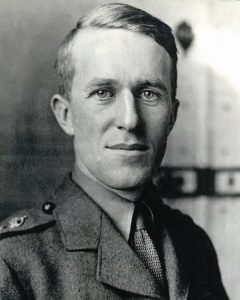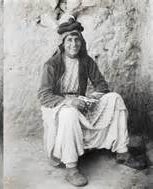War Hero Dies For Lack Of One Small Piece of Equipment

Motorcycle Enthusiast T.E. Lawrence

Royal Air Force Officer T.E. Lawrence
Lawrence of Arabia led numerous dangerous assignments during World War I. In the end, lacking one small piece of equipment cost him his life. Thomas Edward Lawrence, a soldier in the British Army, methodically carried out over 79 separate missions in the Arabian Peninsula during the First World War. Lawrence was a brilliant and compassionate man that never let ambition blind him to the lives of those around him. He wrote that the missions he was most proud of were the 39 that resulted in no injuries to his men. His many successful missions, destroying bridges and Turk transport lines along the Hajay railway, were often carried out without support.
The Middle East’s forbidding terrain lured Lawrence, “The abstraction of the desert landscape,” he wrote in Seven Pillars of Wisdom, “cleansed me.” T.E. Lawrence, a born adventurer, was welcomed into the world on August 16, 1888 to Thomas Chapman and Sarah Junner. A veracious student he devoured history and loved traveling to historic locations. Once, while studying in Syria, he walked over a thousand miles exploring castles and old churches.
 Young Lawrence was twenty three years old when his passion with the desert began in Carchemish, Northern Syria, where he worked as an archeologist. He writes of drinking of the “effortless, empty, eddyless wind of the desert,” that it was “the very sweetest scent of all.” Lawrence cared deeply for the locals during his time at Carchemish, in particular one bright young boy Selim Ahmed, nicknamed by his fellow Arabs, Dahoum, “the little dark one.” Lawrence taught Dahoum math and English; in return Dahoum taught him Arabic and helped him navigate relationships with the local population. Lawrence eventually left Carchemish with a heavy heart leaving Dahoum as custodian of the Carchemish site. It was his fervent desire that the Arab people be freed of the Turks and be allowed to self-govern. He would later dedicate his book, Seven Pillars of Wisdom, to Dahoum in which he eloquently wrote, “I loved you, so I drew these tides of men into my hands and wrote my will across the sky in stars to earn you Freedom, that seven-pillared worthy house, that your eyes might be shining for me when we came…”.
Young Lawrence was twenty three years old when his passion with the desert began in Carchemish, Northern Syria, where he worked as an archeologist. He writes of drinking of the “effortless, empty, eddyless wind of the desert,” that it was “the very sweetest scent of all.” Lawrence cared deeply for the locals during his time at Carchemish, in particular one bright young boy Selim Ahmed, nicknamed by his fellow Arabs, Dahoum, “the little dark one.” Lawrence taught Dahoum math and English; in return Dahoum taught him Arabic and helped him navigate relationships with the local population. Lawrence eventually left Carchemish with a heavy heart leaving Dahoum as custodian of the Carchemish site. It was his fervent desire that the Arab people be freed of the Turks and be allowed to self-govern. He would later dedicate his book, Seven Pillars of Wisdom, to Dahoum in which he eloquently wrote, “I loved you, so I drew these tides of men into my hands and wrote my will across the sky in stars to earn you Freedom, that seven-pillared worthy house, that your eyes might be shining for me when we came…”.

Emir Faisil
Lawrence proved himself an exceptional strategist. When the First World War broke out he joined the British army and was stationed in Egypt. Soon after arriving in Egypt he was sent on an intelligence mission to Arabia where he soon became liaison to the Arab forces in the Arab Revolt. His skills as a strategist and mastery of the language made him a valuable asset to the leader of the revolt, Emir Faisal with whom he worked very closely. Faisal would go on to become King of the Arab Kingdom of Syria in 1920 and later, in 1921 King of Iraq in no small part thanks to missions planned and executed with Lawrence.
Lawrence’s achievements, thought to be impossible by anyone else, made him one of the most iconic figures of his time. An eloquent writer he eventually published his memoirs, Seven Pillars of Wisdom. Lawrence gained international fame when the tremendously successful film “Lawrence of Arabia,” based on his wartime memoirs, was released forty years later. The film was nominated for ten Academy Awards and won seven including Best Director, Best Sound Editing, Best Film Editing and Best Picture.
Lawrence’s enthusiasm for adventure did not diminish after the war but extended to regular escapades touring the countryside on his beloved motorcycle. About his motorcycle he writes, “Its tyres never wanted air, its engine had a habit of starting at second kick: a good habit, for only by frantic plunges upon the starting pedal could my puny weight force the engine over the seven atmospheres of its compression.”
In the end, war hero, T.E. Lawrence, died for lack of one small piece of equipment – a helmet. This amazing man survived the Great War, the first global war in which over sixteen million people perished. He survived wandering the desert thousands of miles on foot. He survived playing a pivotal role in the Arab Revolt. He walked through all of these dangers unharmed only to die tragically of a head injury sustained during a motorcycle crash on May 19th in 1935. He was only 47 years old. Recognizing that the heartbreaking loss of such a dynamic and accomplished war hero could have been prevented spurred his doctor, Dr. Hugh Cairns, to research the safety potential of motorcycle helmets protecting future adventurers, road warriors and riding enthusiasts.
 Bell Rogue Motorcycle Helmet Review
Bell Rogue Motorcycle Helmet Review Arai Vector-2 Motorcycle Helmet Review
Arai Vector-2 Motorcycle Helmet Review Shoei RF-1200 Motorcycle Helmet Review
Shoei RF-1200 Motorcycle Helmet Review